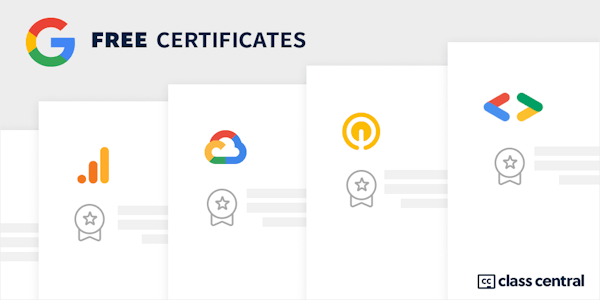Overview
Class Central Tips
Build Dynamic User Interfaces (UI) for Websites is the sixth course in a program that will equip you with the skills you need to apply to entry-level jobs in user experience (UX) design. In this course, you will plan a design for a website, create wireframes and prototypes, and test your designs to get feedback. Additionally, you will learn about engaging in design critique sessions and how to give and receive feedback. By the end of this course, you will have a new design project to include in your professional UX portfolio. In addition, you’ll learn how to search for entry-level UX design jobs, create a resume that highlights your skills and accomplishments, and build your professional portfolio website.
Current UX designers and researchers at Google will serve as your instructors, and you will complete hands-on activities that simulate real-world UX design scenarios. Learners who complete the seven courses in this certificate program should be equipped to apply for entry-level jobs as UX designers.
By the end of this course, you will be able to:
- Apply each step of the UX design thinking framework (empathize, define, ideate, prototype, test) to create a responsive website.
- Plan information architecture and create sitemaps for website designs.
- Apply common layouts for web pages.
- Plan and conduct a usability study to gather feedback about designs.
- Iterate on designs based on research insights.
- Work with design systems.
- Add a new design project to your professional UX portfolio.
- [Optional] Create or update a UX-focused resume.
- [Optional] Learn how to search for and apply to introductory-level jobs in the field of UX.
This course is suitable for beginner-level UX designers who have completed the previous five courses of the Google UX Design Certificate. Alternatively, learners need to have a strong foundational understanding of the design process; experience creating wireframes, mockups, and prototypes; and the ability to conduct usability studies. No previous experience with Figma is required.
Syllabus
- Plan a responsive website
- Get started with the basics of responsive web design. To create a responsive website, you’ll follow the steps of the UX design process: empathize, define, ideate, prototype, and test. In this part of the course, you'll complete the empathize and define phases.
- Create and test prototypes
- Now that you’ve created digital wireframes, it’s time to build, test, and iterate on a low-fidelity prototype. First, you'll learn how to build a low-fidelity prototype. You’ll get feedback about your prototype by planning and conducting a usability study. Then, you'll make changes to your low-fidelity designs based on insights from your research.
- Participating in design critique sessions
- After you’ve empathized with users, defined the user problem to solve, and begun to ideate possible solutions, it’s time to bring your ideas to life in wireframes. Your responsive website will have different layouts, depending on the device and screen size you’re designing for, so you'll create lots of different wireframes. First, you'll explore common website layouts, and you'll create paper wireframes. Next, you'll get to know a few elements and components that are commonly used in responsive website design. Then, you'll transition to create digital wireframes. Finally, you’ll update and refine your wireframes to enhance accessibility.
- Document design work and search for jobs
- With your responsive website designs complete, you'll be ready to share your work with others. To start, you’ll learn how to prepare and handoff designs to engineers, who will build the final product. You’ll also add a case study to your professional UX portfolio featuring your responsive website designs. Then, you'll pivot to focus on your big picture goal: getting a job as a UX designer. You'll learn tips and tricks to scan job postings, and you'll create a compelling resume that highlights your new UX skills.
Taught by
Google Career Certificates
Tags
Reviews
5.0 rating, based on 1 Class Central review
4.8 rating at Coursera based on 3112 ratings
Showing Class Central Sort
-
The course was very comprehensive and easy to understand. The instructors made sure that they are giving the information in a way that won't make me confused. Thank you so much for this great course!







